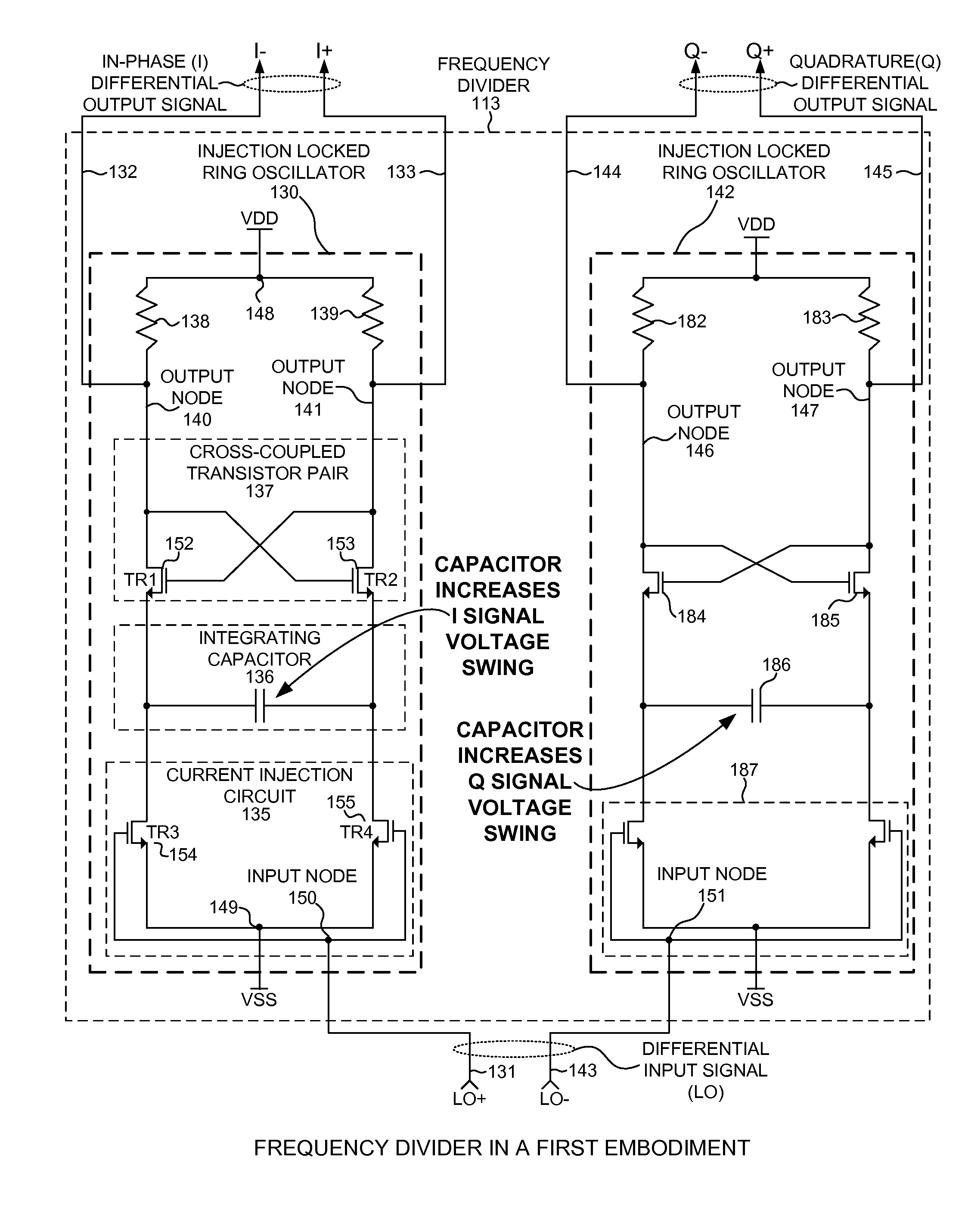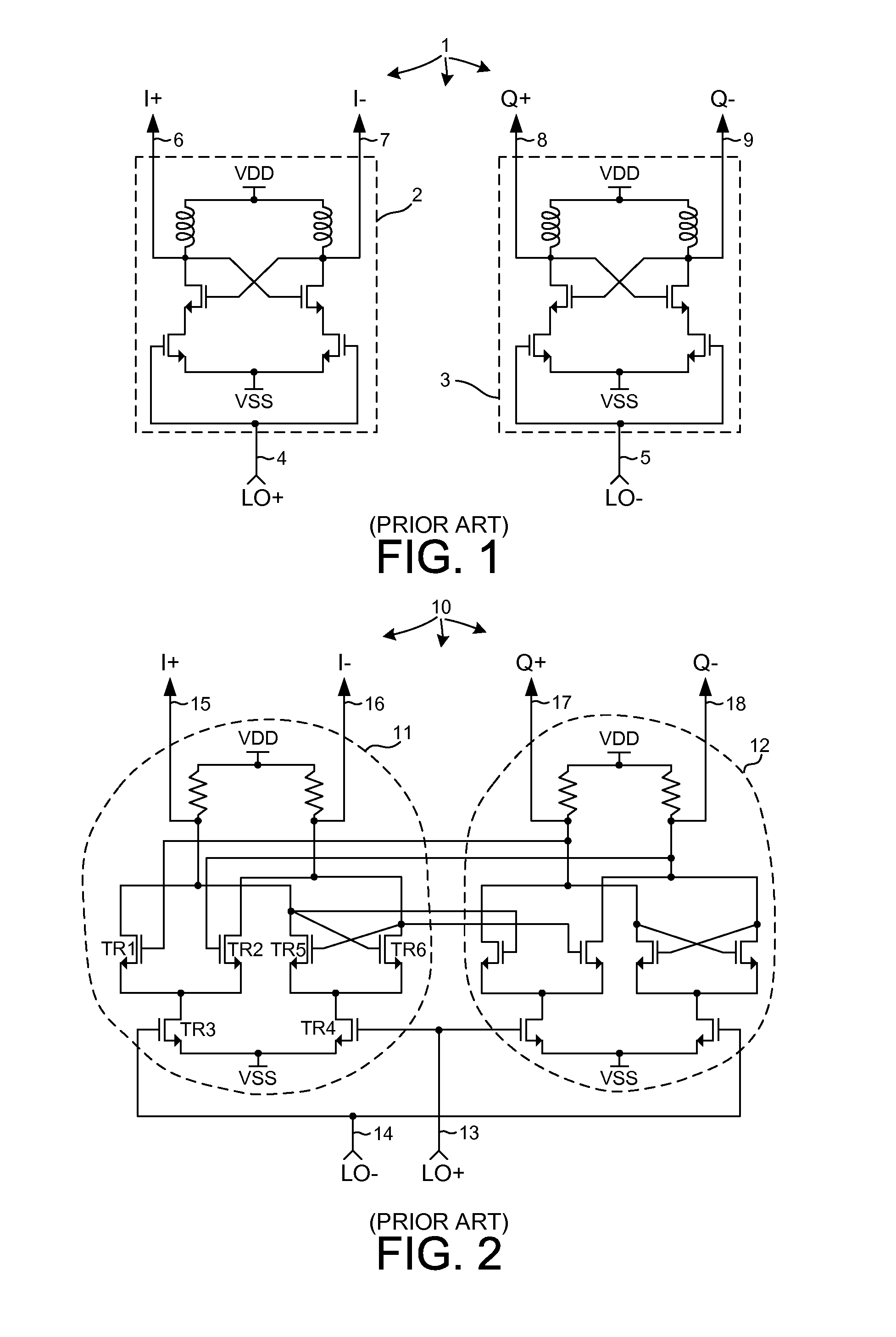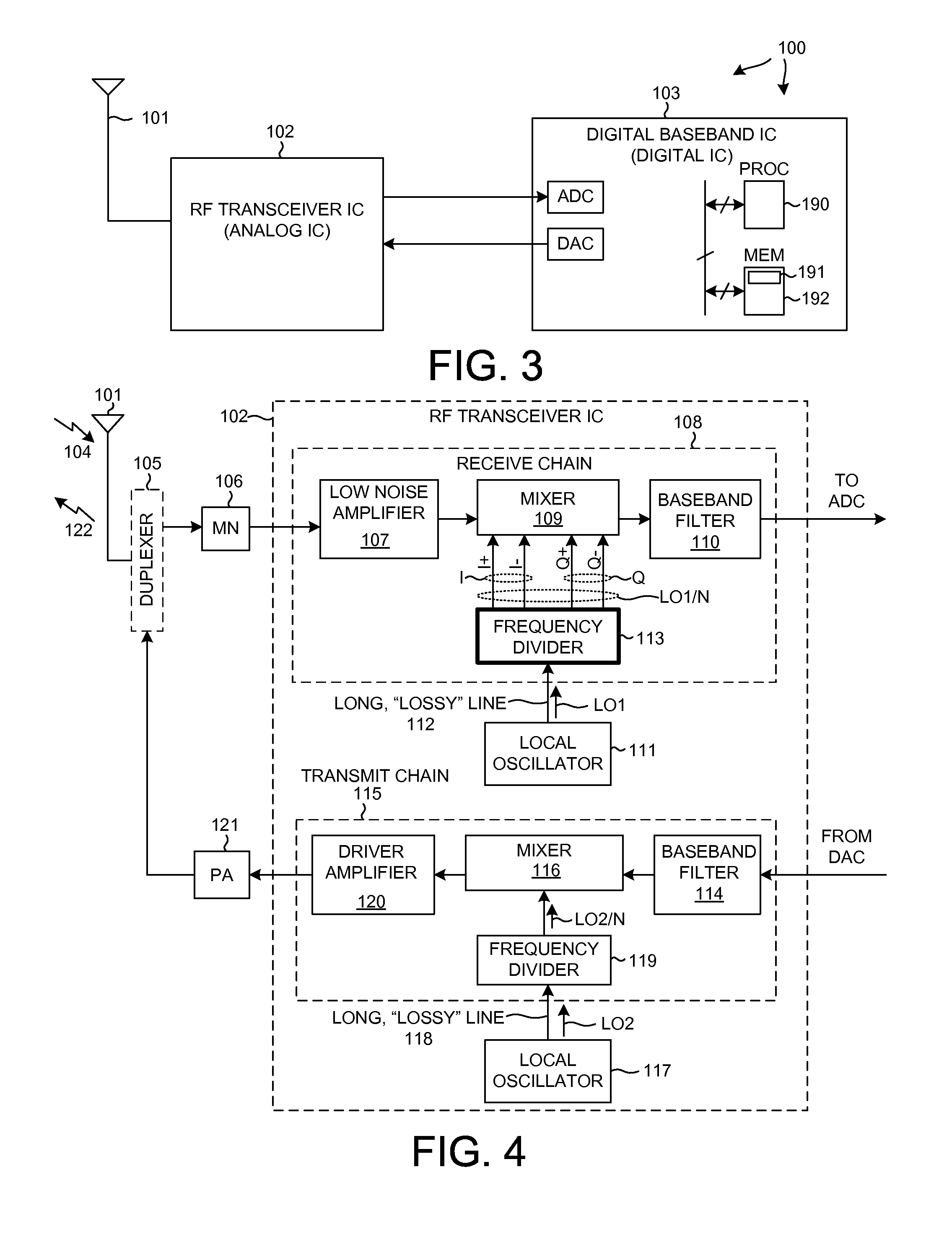Divide-by-two injection-locked ring oscillator circuit
a technology of injection-locked ring oscillators and dividers, which is applied in the field of frequency dividers, can solve the problems of inability to divide, inability to achieve the effect of dividing, and undetectable physical size of a conventional ilfd, so as to improve the slew rate of output signals, and improve the effect of divider performan
- Summary
- Abstract
- Description
- Claims
- Application Information
AI Technical Summary
Benefits of technology
Problems solved by technology
Method used
Image
Examples
third embodiment
[0041]FIG. 10 is illustrative of a divide by four operation of frequency divider 113 in a In the present example, frequency divider 113 includes ILRO 130, ILRO 142, and ILRO 162. As depicted in FIG. 10, ILRO 130 and ILRO 142 are as described in FIG. 6 and ILRO 162 is analogous to ILRO 130. Output signal I− is present at oscillating node 140 of ILRO 130 and is communicated from frequency divider 113 on conductor 132. Output signal I+ is present on oscillating node 141 of ILRO 130 and is communicated from frequency divider 113 on conductor 133. Output signal Q− is present at oscillating node 146 of ILRO 142 and is communicated from frequency divider 113 on conductor 144. Output signal Q+ is present on oscillating node 147 of ILRO 142 and is communicated from frequency divider 113 on conductor 145. Input signal I1+ is present on input node 167 of ILRO 162. Input node 167 is coupled to conductor 131, and input signal I1+ is received by frequency divider 113 on conductor 131. Oscillatin...
second embodiment
[0042]ILRO 162 receives oscillatory input signal I1+ over conductor 131 and performs a divide by two operation in frequency as discussed above with respect to ILRO 130. ILRO 162 outputs differential output signal LO as divided down oscillatory signal LO+ present on output node 165 and divided down oscillatory signal LO− present on output node 166. ILRO 130 and ILRO 142 are clocked on opposite phases of input signal LO due to the communication of the LO+ signal from node 165 to input voltage node 150 of ILRO 130 on conductor 163 the communication of the LO− signal from node 166 to input voltage node 151 of ILRO 142 on conductor 164. ILRO 130 receives oscillatory input signal LO+, performs a divide by two operation in frequency, and outputs divided down oscillatory signals I+, I−. Similarly, ILRO 142 receives oscillatory input signal LO−, performs a divide by two operation in frequency, and outputs divided down oscillatory signals Q+, Q−. Signals I+, I−, Q+, and Q− are in phase quadra...
fourth embodiment
[0043]FIG. 11 is illustrative of frequency divider 113 in a In the present example, frequency divider 113 includes ILRO 130 and ILRO 142. As depicted in FIG. 11, ILRO 130 and ILRO 142 are as described in FIG. 6, however, in the present example additional elements are included. ILRO 130 includes transistors 174 and 175. The source of transistor 174 and the source of transistor 175 are coupled to a first lead of current source 180. A second lead of current source 180 is coupled to circuit supply voltage source, VSS. The gate of transistor 174 is coupled to oscillating node 160 of ILRO 130 via Alternating Current (AC) coupling capacitor 172. AC coupling capacitor 172 is sized to block Direct Current (DC) offset voltage signals and pass high frequency (Alternating Current) AC voltage signals. Similarly, AC coupling capacitor 173 couples the gate of transistor 175 to oscillating node 161 of ILRO 130. The drain of transistor 174 is coupled to oscillating node 146 of ILRO 142. As coupled ...
PUM
 Login to View More
Login to View More Abstract
Description
Claims
Application Information
 Login to View More
Login to View More - R&D
- Intellectual Property
- Life Sciences
- Materials
- Tech Scout
- Unparalleled Data Quality
- Higher Quality Content
- 60% Fewer Hallucinations
Browse by: Latest US Patents, China's latest patents, Technical Efficacy Thesaurus, Application Domain, Technology Topic, Popular Technical Reports.
© 2025 PatSnap. All rights reserved.Legal|Privacy policy|Modern Slavery Act Transparency Statement|Sitemap|About US| Contact US: help@patsnap.com



